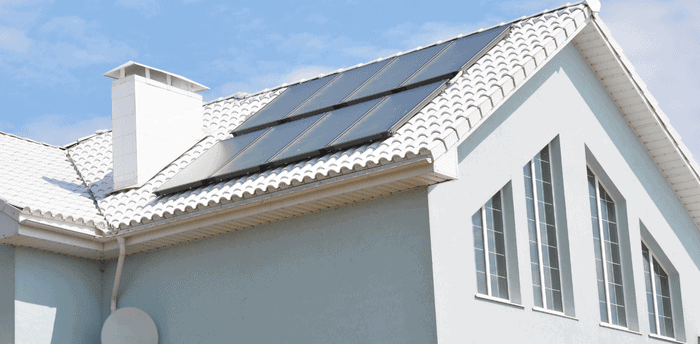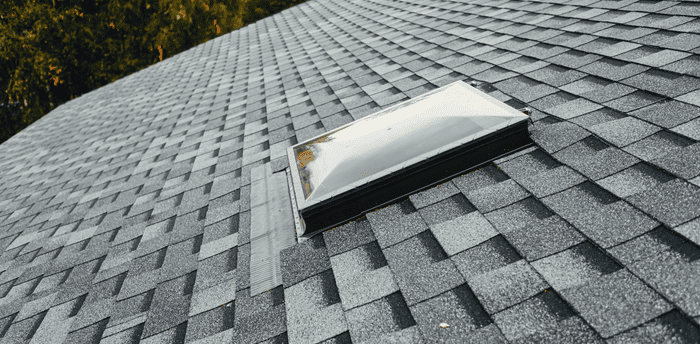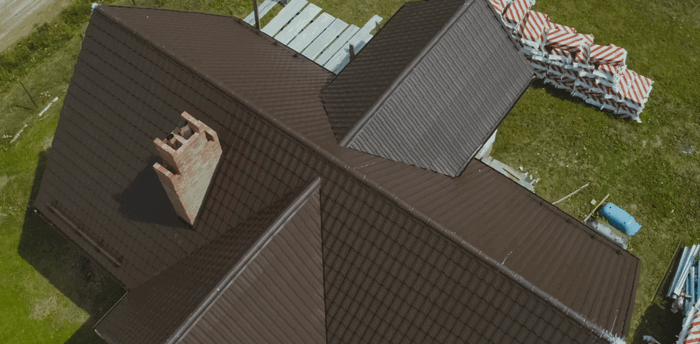Navigating the complexities of roofing energy efficiency in California is essential for homeowners seeking to mitigate rising temperatures and energy costs. This document offers practical insights and guidance on making smart roofing choices to enhance comfort and reduce expenses while meeting state requirements.
Table of Contents
Understanding California's Climate Zones and Energy Code
California’s approach to roofing is as unique as its diverse climate. The state is divided into sixteen climate zones, each with its own specific energy efficiency requirements. It is crucial to understand which zone you’re in when tackling any roofing project to help adhere to standards set in place to guide construction.
California's Building Energy Efficiency Standards
California’s Title 24, established in 1978, sets minimum energy efficiency standards for buildings, including roofing. These standards aim to reduce energy use and mitigate the urban heat island effect. Roofing requirements vary by region, so it’s crucial to check local city or county codes before starting any project. Title 24, Part 6, is typically updated every three years, impacting project timelines and material choices as standards become more stringent.
Complying with Title 24: Solar Reflectance Index (SRI)
California’s Title 24 compliance relies heavily on the Solar Reflectance Index (SRI). SRI measures a material’s ability to reflect sunlight and release heat; higher SRI values reduce energy consumption. Compliance requirements vary by climate zone and project type. For example, Los Angeles mandates asphalt shingles with an SRI of 20 or specific aged SR and thermal emittance values, as per the Green Building Standards Code.

The Benefits of Energy Efficient Roofing
Investing in energy-efficient roofing, or ‘cool roofs,’ in California yields numerous advantages, extending beyond regulatory compliance to significantly improve property comfort and value. These benefits, which we will now examine, have a profound impact on homeowners.
Lower Energy Costs and Air Conditioning
Cool roofs lower energy costs by reflecting sunlight and reducing heat absorption, lessening the burden on air conditioning. This results in significant savings and long-term financial benefits for homeowners.
Improved Air Quality
Cool roofs can improve air quality by reducing temperature-dependent ozone and emissions. Widespread adoption contributes to cleaner air, potentially lessening health issues related to pollution. Selecting energy-efficient roofs contributes to a healthier environment.
Increased Property Value
Energy-efficient roofing, particularly metal, can increase property value, improving potential ROI. This makes homes more attractive to buyers, enhancing market appeal. Upgrading roofing is an investment that can yield significant returns during resale. A well-chosen, efficient roof elevates a home’s position in the real estate market.
Choosing the Right Roofing Materials
Selecting the right roofing material is pivotal in achieving optimal energy efficiency and requires deeper consideration than you might imagine. Now that we know about energy benefits from new materials, let’s think about types of options to consider and how to best use the available technology out there. After all, not all roofing materials are created equal.
Cool Roof Shingles and Coatings

Cool roof shingles and coatings are specifically designed to reflect sunlight and dissipate heat, effectively minimizing heat absorption. This can significantly reduce attic temperatures, leading to lower air conditioning usage. Furthermore, the Cool Roof Rating Council (CRRC) provides ratings that influence color choices for roofing materials, as jurisdictions use these ratings to determine compliance with cool roof standards.
Therefore, it’s crucial to ensure your chosen color complies with state regulations before submitting your project for compliance and final inspection approval. These specialty shingles, manufactured with reflective surfaces, help maintain cooler home temperatures, particularly during peak sunlight hours. Always consult the CRRC directory to verify product compliance when planning your roofing project.
Metal Roofing

Metal roofing offers durability and significant energy savings, potentially reducing heating and cooling costs by up to 25%. While initial material and installation costs may be higher, metal roofs can lead to long-term savings, including potential reductions in homeowners’ insurance premiums depending on location.
Furthermore, metal roofing systems combine durability, longevity, and energy efficiency. When coated with reflective paint, they further enhance solar reflectance, making them an excellent choice for reducing energy costs and complying with building energy efficiency standards.
Installation Best Practices for Energy Efficiency
Choosing the right roofing materials is just half the battle. Proper installation is vital to ensure those materials perform as intended, and if performed incorrectly, will absolutely ruin their intent. Here’s a secret and a good rule of thumb: hire licensed and qualified contractors.
Correct roofing installation maximizes the performance of energy-efficient materials. Shortcuts during installation can compromise the thermal performance and longevity of the roof. Therefore, find licensed contractors experienced in installing cool roofs.
Proper Ventilation
Proper attic ventilation is essential for maximizing roof longevity. Adequate airflow prevents heat accumulation, which can degrade roofing materials and shorten their lifespan. Compliance with California building codes regarding insulation is crucial for maintaining optimal ventilation. Furthermore, improved ventilation contributes to enhanced energy efficiency and a reduction in greenhouse gas emissions, aligning with sustainable building practices.
The Future of Roofing Energy Efficiency in California
California’s ongoing pursuit of energy efficiency, particularly in roofing, leads to frequent innovations. This drive, while aiming for long-term benefits like cost savings and reduced environmental impact, can introduce regulatory changes, such as updates to Title 24, which may initially seem challenging. Staying informed about these evolving standards and technologies is crucial for homeowners and builders alike.
Integration with Solar Technology
Integrating cool roofs with solar panels is a promising trend, with California mandates driving adoption in residential units. The California Energy Commission’s 2021 decision emphasizes solar and battery installations, enhancing roofing investments. Solar roofing systems are becoming more efficient and aesthetically integrated, maximizing energy production while preserving architectural appeal. This combination offers significant benefits beyond traditional roofing.
AI to the Rescue?
AI is increasingly explored for its potential to streamline building energy efficiency and compliance. By automating data analysis and optimization, AI tools aim to reduce effort and time in achieving energy-conscious installations. As AI evolves, it’s expected to significantly enhance energy management, leading to smarter, more efficient buildings. While current applications are developing, AI holds promise for transforming how buildings meet energy standards.
The Important Role of Regular Maintenance
Think of your roof as a long-term investment, needing regular attention to perform its best. Just like any building component, its needs evolve. Consistent maintenance—inspections, cleaning, and repairs—is crucial for preventing minor issues from escalating into costly problems. This not only prolongs the roof’s lifespan but also ensures it maintains its energy efficiency. By proactively addressing potential issues, you protect your investment and ensure continued compliance with building standards, benefiting both your wallet and the environment.
Overcoming Challenges and Maximizing Savings
Switching to an energy-efficient roof can present challenges, especially in regions with extreme climates like Tahoe and Mammoth Lakes, where heavy snowfall necessitates specific insulation. However, solutions exist for these challenges thanks to advancements in roofing technology. For successful projects, selecting a certified contractor is essential. They can recommend appropriate materials, ensure code compliance, and perform quality installations tailored to California’s diverse climate
Finding Rebates and Incentives
Before starting any roofing project in California, research available rebates and incentives. City, county, state, and federal programs can significantly offset costs, especially with recent material price increases. These incentives promote energy-efficient upgrades, benefiting both homeowners and the environment.
Consult local utility companies or roofing contractors to identify applicable programs and eligibility requirements. Participating in these programs can reduce financial burden and support community sustainability.
Long-Term Cost Analysis
A long-term cost analysis is essential when considering energy-efficient roofing. Federal and state incentives can significantly reduce initial investment costs. Furthermore, these roofing materials can lower homeowners’ insurance premiums and minimize future maintenance expenses due to their durability.
By factoring in energy savings, potential rebates, and increased property value, homeowners can accurately assess the return on investment. This comprehensive approach ensures that the benefits of cool roofing are fully realized.
Conclusion
With California’s commitment to sustainability, investing in roofing energy efficiency is more than a trend; it’s an effective, long-term solution. By taking these actions, homeowners can reduce their carbon footprint, lower energy bills, and meet local compliance standards, unlocking a range of unforeseen opportunities. Therefore, homeowners should strongly consider implementing these energy-efficient roofing solutions.



0 Comments